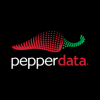How To Implement Cloud Observability Like A Pro | Pepperdata
Do traditional on-prem observability techniques translate to the cloud? Many big data enterprises lack observability and thus struggle to manage and understand unprecedented amounts of data in the cloud.
Learn why Enterprise clients use Pepperdata products and Services: https://www.pepperdata.com/
#cloudobservability #bigdatacloud #pepperdata
A monitoring solution may alert to a problem, but it can’t pinpoint the issue or quickly get to the root cause.
Observability, by contrast, tells you why you have a problem and often provides a recommendation on how to quickly resolve it. Combined with ML and automation, observability delivers actionable answers to optimize cloud-native applications while also improving overall cluster performance. Observability is particularly challenging in cloud environments, where the old, manual, cluster-by-cluster approach may be insufficient and error-prone.
In this webinar, you will learn three key techniques for achieving big data observability in the cloud.
So, just to get started, some of today's topics that we want to cover are starting off with a quick overview of observability concepts so we can all get on the same page about what observability means. And we'll discuss some specific observability challenges that the cloud presents. And then, Kirk will talk about three key techniques we've identified for achieving observability in the cloud, along with some case studies of companies we've worked with who have taken advantage of those techniques to really drive their business goals, whether that was optimizing growth or reducing costs in different ways.
So, to get started let's talk about what the word observability means. So, really at its most basic level, it's a term from control theory that measures what we can infer about the internal state of a system based on its outputs. Kind of like a black box view of the world. The theory really states that if we can observe a system we can control it. And controllability and observability are really duals.
So, the way we think of it is observability is a way of helping you stay ahead of issues at every level of the system. And you know, from the application or job level up through the machine or OS and hardware level. And finally, at the network level too. And so, as such observability really helps us answer questions we may not even know we have yet.
So, in practice observability isn't really like a boolean state or you get to a place where you say, “Okay, we did all these things. Now we've achieved observability.” Observability is what I call the three C's: a continuously improving practice or a way of thinking, and it's also a collaborative practice like a team sport, and no one person can really implement a sustainable culture of observability single-handedly. And it's going to look a little bit different at every company, depending on your specific business goals or your internal processes and your company's success metrics. So, you have to ask yourself, are you optimizing for speed, or for efficiency, or cost control, or something else? Knowing all of that will really help you focus your observability efforts. Trying to move to the next slide. Here we go. Okay. So, there's sometimes confusion about the exact difference between monitoring and observability. So, where does one transition to the other?
The way we see it is that whereas monitoring collects metrics and logs that provide information about what your system is doing and can alert you to issues that pop up, observability is more of a cultural practice that's built on top of the basic monitoring tools that helps you answer the why questions. So, it helps you transform from more of a reactive to a proactive posture with regard to managing your systems.
As we can see in this slide, observability complements traditional monitoring tools, but it also goes beyond them, really empowering you to get a handle on your big data system in a myriad of ways. There is actually a lot more that can be said on this topic. So, if you'd like to learn more we have a white paper on this topic, which I think is in the links below. This presentation is also on the Pepperdata website. So, how do we think about observability when we move from traditional on-prem IT infrastructures to this incredible complexity of the cloud.
Learn why Enterprise clients use Pepperdata products and Services - https://www.pepperdata.com/
Check out our blog: https://www.pepperdata.com/blog/
/////////////////////////////////////////////////////////////////////////////////////////
Connect with us:
Visit Pepperdata Website: https://www.pepperdata.com/
Follow Pepperdata on LinkedIn: https://www.linkedin.com/company/pepperdata
Follow Pepperdata on Twitter: https://twitter.com/pepperdata
Like Pepperdata on Facebook: https://www.facebook.com/pepperdata/

